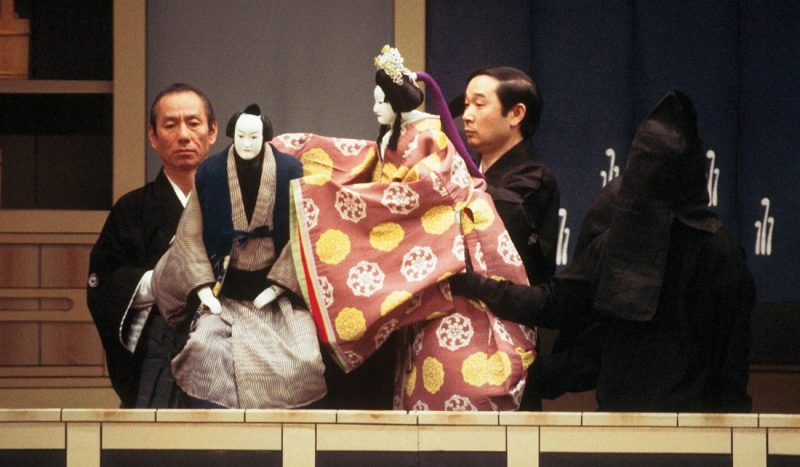It's a beautiful movie. And for strong hearts. Takeshi Kitano brought, in 2002, the combination of three love stories, two of them inspired by the stories of the Bunraku puppet theater and one in the pure observation of its surroundings.

Kitano is one of the great names in Japanese cinema. Director, screenwriter, actor, and editor, this multifaceted artist also brings a diverse range of genres in his productions, but, until today, I have never seen anything like Dolls. The film intertwines three love stories that seem to be told by a couple of Bunraku puppets from Japanese theater. They open and close scenes. During them, one of the stories is of a couple walking through the seasons of the year tied together by a long red thread. The three are beautiful and somewhat sad, due to their tragic tone at some point in the narrative. All are, however, unforgettable.
I saw the movie when it came out 16 years ago, and it still hasn't left my mind. I don't fully remember him, but seeing Japan under this photograph, the seasons passing through this walking and silent couple, stayed with me as a poetic and beautiful expression of the culture. Likewise, the treatment given to the other two stories, also with a delicacy rarely seen in the extremely talked about novels that we usually see in Western productions. Here, the speech is for a few moments only.
What counts is the combination of artistic appreciation and feeling. The feature is to be seen with a company that understands this or that you see yourself, maybe it's even better. Photography, costumes that mix traditional and modern culture and this idea of being always looking for something, but always stuck, also provoke reflection.
We particularly identify with this couple who walk freely through the world, but held together by a firm bond that does not untie. I think at some point in our lives, we can feel trapped like this couple, in a bow or a big knot without ends. It's not visible, but we know when it happens and we don't see a short-term solution on the horizon, how to untie it. For this, it is necessary to have patience, as the film proposes, to find that time for ourselves, so that we can reflect with patience and perseverance, what we are living. Find a new perspective, look from a new angle.

This process of self-knowledge and meditation is another strong mark of Japanese tradition and behavior.
Your representation in a large part of the country's cinematography is not free. These studies about ourselves are fundamental for our own development in any situation. Yuri Martins knows well what this is. A poker champion and regularly subjected to high-stress situations, Yuri established a process of self-knowledge and mental training that guarantees results. He prepares, studies, recognizes the signs in himself that he needs to develop, and then tests himself.
I can't say if he's a follower of some Eastern philosophy or meditation, but there's certainly some influence there. Like the couples in Kitano's work and the maximum cliché of life, it is necessary to give time to time, it is necessary to persevere in order to progress and understand what happens to us, to find new ways of looking, it requires giving opportunity for the new.
Perhaps this is what the tragic characters in this film lack, which, in a conversation, would not be exhausted so quickly. There are many layers and perspectives to address, and it can also establish itself as a purely aesthetic entertainment for those who don't want to go further. Just sit in front of the canvas and surrender to the images composed like paintings that only a multiple artist, with a large cast and crew, could build.
